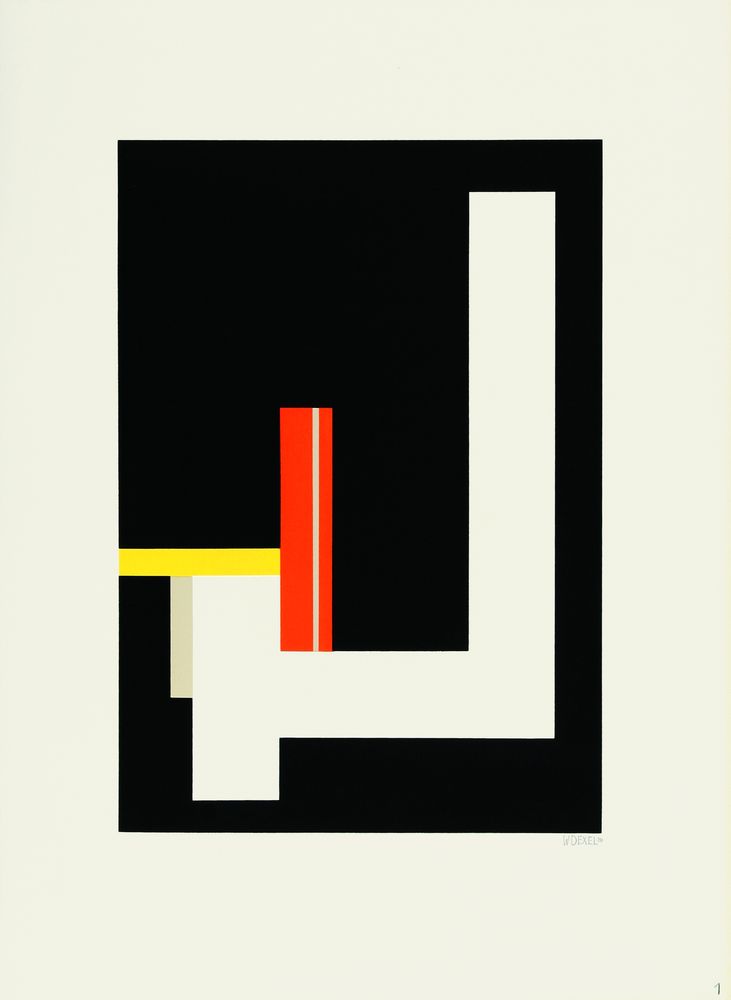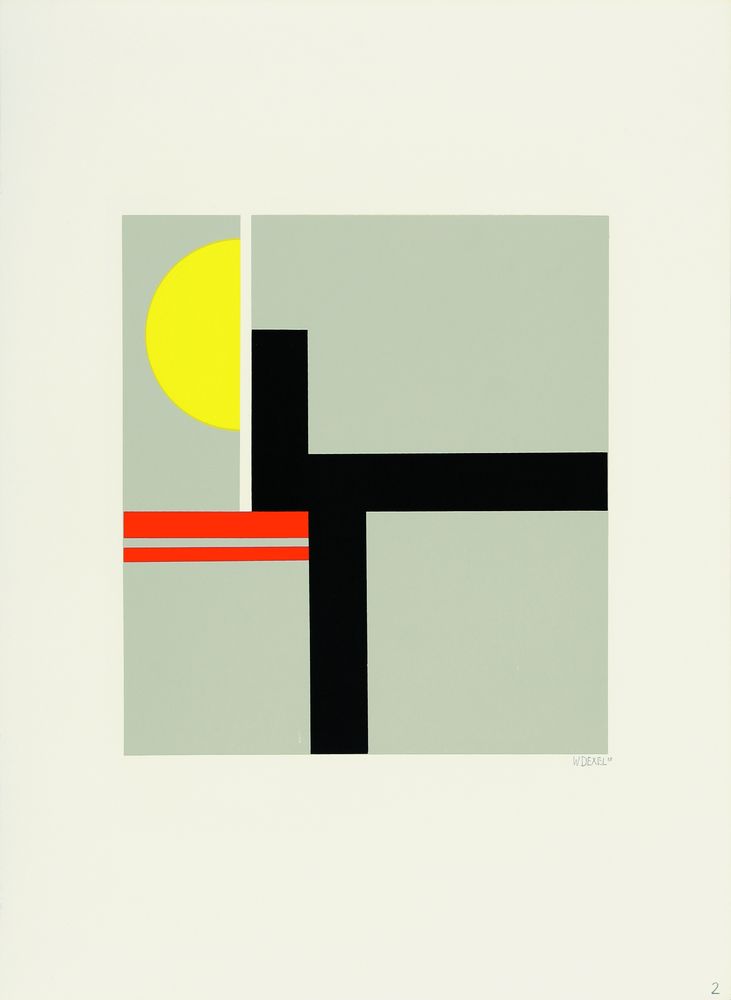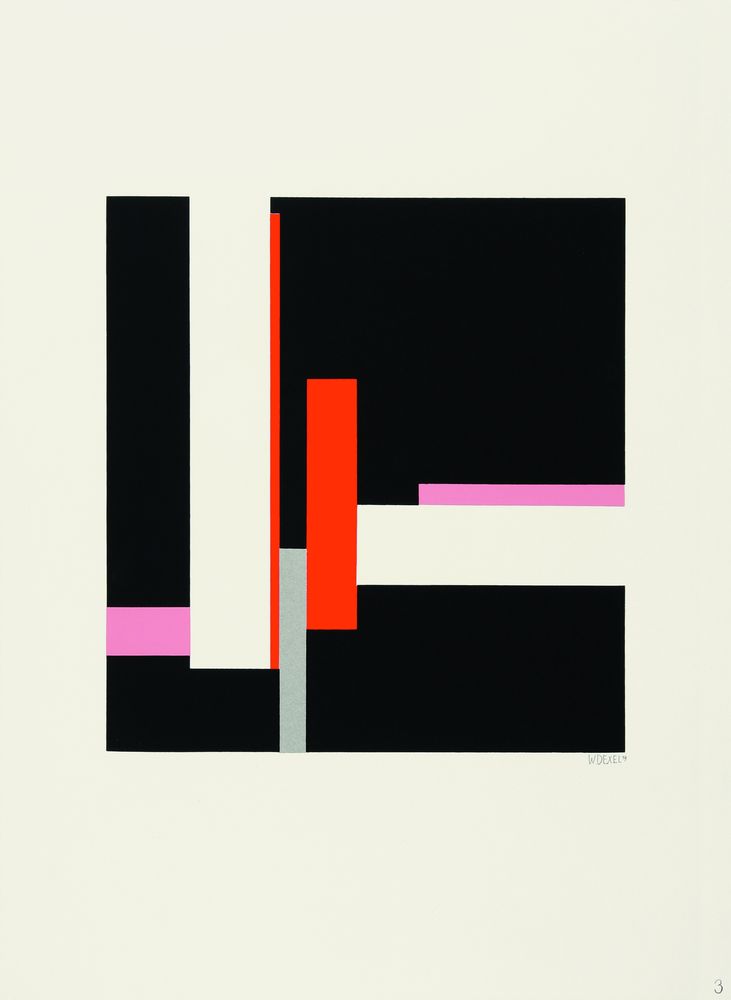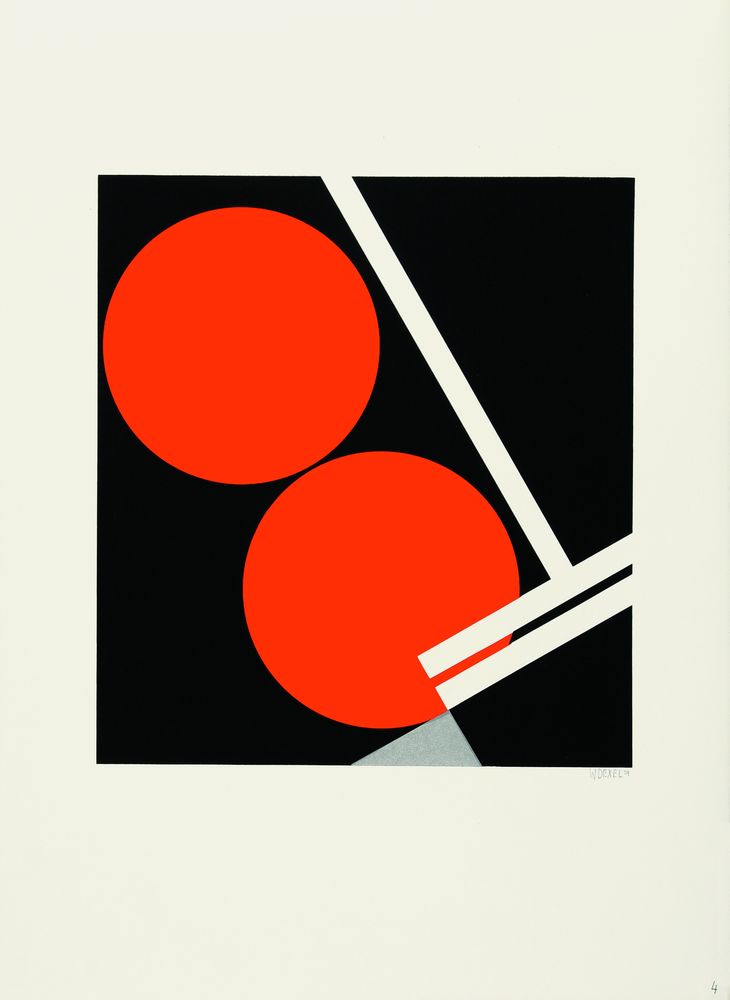Folder with six screenprints
Dimensions: 58 x 42.5 cm each
Signature, inscriptions, markings: each signed and dated at lower right, numbered at the cover sheet
Copy Number: 16/120
Printer: Adolf Pilz, Braunschweig
Editor: Edition Panderma, Carl Laszlo, Basel
Accession Number: 1001261.1–6
Images: Sheet 1 - 4
Walter Dexel was one of the outstanding personalities of Constructivism between the two world wars. He did not join an art movement that was recognized as progressive at the time out of a spontaneous and current decision; his Constructivism was rather the end of a development that had lasted many years. He developed his artistic work from architectural pictures to pictorial architecture. In a figurative Constructivism, the diagonal played a special role in his work early on.
In a series of signet heads, he had brought protagonists of the 1930s succinctly and strikingly into the picture. For all the abstraction typical of the time, which used a method of assembly-line stereotyping, he nevertheless endowed them with individual profiles.
Dexel had initially had to give up painting in 1935 because he was dismissed by the National Socialists as head of the class for commercial art at the Magdeburg School of Arts and Crafts. It was not until 1961 that he resumed his artistic work and initially began to transform sketches from the 1920s into paintings and prints. In his works, he was primarily concerned with capturing movements and tensions in the surface through harmony and pictorial order.1
In the series of six silkscreens, he combined geometric elements in the primary colors red, yellow, and blue, as well as black and white. Lines, circles, and segments of circles of varying thickness lie vertically, horizontally, or diagonally to one another in rectangular surfaces. In each sheet, Dexel varies the color, number and composition of the pictorial elements. In this way, different "characters" are created, whose commonality can only be seen in the use of the color red and white lines. In one of the paintings, a polygonally angled white shape lies without edge contact in a black surface. The composition appears closed and the structure seems to float in the surface. In another image, intertwined wide and narrow lines run vertically and horizontally from a node to the edge of the image. Some stripes are colored, others are white like the cardboard, as if the surroundings penetrate the picture through openings and are also included by it. The compositions, differentiated as it were by character, suggest individuals in their respective peculiar perception of and interaction with the environment.
In his work as a typographer, interior designer, stage designer and urban planner, Dexel paid attention to the legibility of forms and colors in a completely different way. He saw the constructivist principles of design as the basis for reshaping the entire human environment. In his contributions to urban design, he made forward-looking proposals for structuring urban street networks and advocated a graphically and semantically logical design of traffic signs that could be quickly grasped visually.2
Sven Künzel
1 Walter Vitt, Walter Dexel. Werkverzeichnis der Druckgraphik 1915–1971, Köln 1971, S. 8.
2 Vgl. Peter Winter, Bilder Zeichen Raum, in: Weltkunst, 1991, 2, S. 412–414, hier S. 412.



